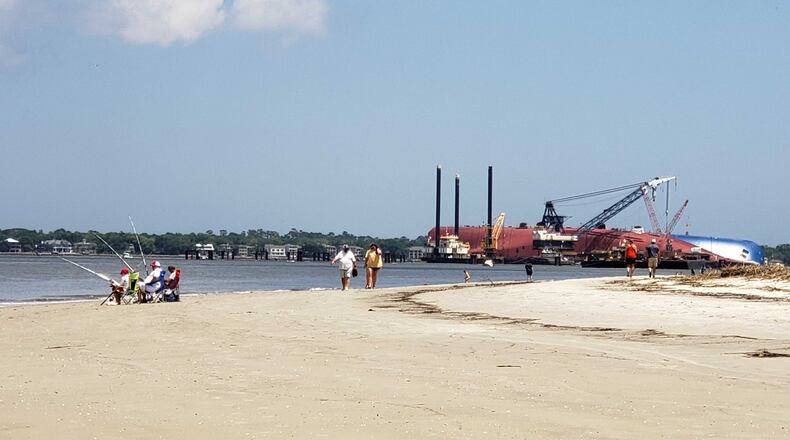The hulking red hull of a capsized cargo ship will mar the view from St. Simons for a while longer after an anchor that is part of the planned removal operation failed to perform as expected.
The Golden Ray capsized just over a year ago, raising concerns about environmental impacts and vulnerabilities to hurricanes as engineers developed a plan for removal.
Plans for chopping it up and removing the pieces had been delayed until early October.
On Wednesday, salvage leaders pushed the removal into at least late October. Engineers must modify a mooring system required for the cutting and lifting operation, delaying it by “several weeks,” St. Simons Sound Incident Response announced Wednesday.
Engineers designed an array of five anchors. Four withstood “pull-testing,” but the fifth failed to meet the pull-test requirements.
Credit: George Mathis/AJC
Credit: George Mathis/AJC
“The Unified Command (UC) is reviewing multiple options for a revised anchor system and will make a decision that ensures the safety of responders and the public, safeguards the surrounding environment as well as provides for the continuation of commerce in the port,” the announcement from the collection of agencies working on removal efforts said.
The wreck remains stable and teams are monitoring the site for pollution, with no “emergent environmental impacts” observed.
The 656-foot ship and its cargo of more than 4,000 cars has remained in the St. Simons Sound since Sept. 8, 2019, when it rolled over on its port side. Modeling by the U.S. Coast Guard has said the likely cause was the placement of cargo in a way that left the ship’s center of gravity too high.
The U.S. Coast Guard Marine Safety Center in Washington, D.C. revealed last month that the ship could have avoided capsizing by adding water to the ballast tanks before leaving the Port of Brunswick.
About the Author
Keep Reading
The Latest
Featured




